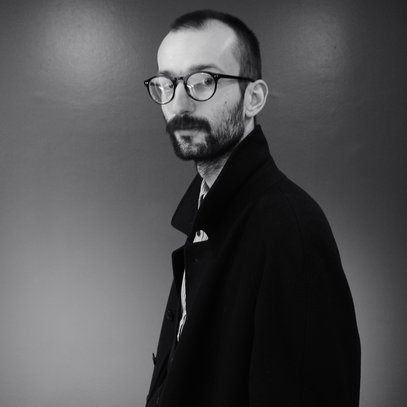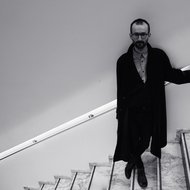Albertas Navickas
The idiom, sound and aesthetics of Albertas Navickas’ music remind of the forms of French culture (from impressionism, to authors heavily influenced by French music, such as Kaija Saariaho). His music of serene melancholy is supple, pastel, nuanced, formed of transparent textures and subtle dynamics, with specific acoustic colouring; it is a music of a single state (be it a chamber miniature or an opera), which spreads like an aroma and is slightly intoxicating.
Asta Pakarklytė
Blanche t'a vu
è
the other three sisters
Biography
Albertas Navickas (b.1986) studied composition with Prof. Osvaldas Balakauskas at the Lithuanian Academy of Music and Theatre. In 2009 he graduated from the Lithuanian Academy of Music and Theatre (MA in Composition) and the Vilnius University (BSc in Biochemistry). In 2007-2008 Navickas also studied composition at the Conservatoire National Supérieur de Musique et de Danse de Paris with Prof. Stefano Gervasoni. In 2008 the composer was awarded (together with his fellow composers from the New Opera Action Festival) the prize for the best stage work at the annual Lithuanian Composers’ Union competition; in 2009 he won the first prize at the young composers’ competition of choral music Vox Juventutis. In 2010 he started his PhD research on genetic engineering and minimal music analysis at the École des Hautes Études en Sciences Sociales, Paris
Albertas Navickas has participated in various music composition and performance workshops, his works have been performed in contemporary music festivals in Lithuania and abroad. He has also participated in organising contemporary music festival Druskomanija, Music Laboratory Network The PROCESS (part of the Vilnius European Capital of Culture 2009) and is one of the founders of interdisciplinary performance movement Music Is Very Important.
The idiom, sound and aesthetics of Albertas Navickas’ music remind of the forms of French culture (from impressionism, to authors heavily influenced by French music, such as Kaija Saariaho). His music of serene melancholy is supple, pastel, nuanced, formed of transparent textures and subtle dynamics, with specific acoustic colouring; it is a music of a single state (be it a chamber miniature or an opera), which spreads like an aroma and is slightly intoxicating.
Filter works by
Work title/Composer/Instrumentation | Samples | Resources | ||
|---|---|---|---|---|
Year/ |
No./Work title/Composer | Publication |
|---|
No./Work title/Composer | Publication |
|---|

